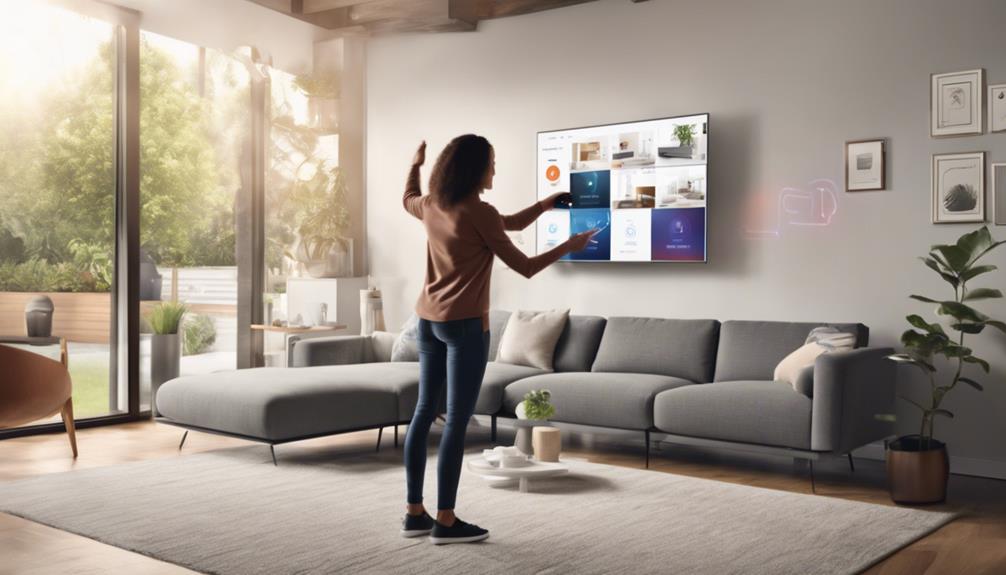Discover the 5th edition of 'Interaction Design Beyond Human-Computer Interaction' PDF for insights on augmented reality, voice interfaces, and inclusive design. Explore new chapters and case studies offering practical applications and user-friendly interface principles. Gain knowledge about context in design, cultural influences, and accessibility insights. Uncover the innovative approaches and real-world examples in this edition for a thorough understanding of interaction design principles and methodologies. Access valuable insights and solutions to design challenges across various contexts, inspiring you to enhance user experiences with impactful products. Let this edition be your gateway to a world of creativity in interaction design.
Key Takeaways
- Introduction of new chapters on augmented reality, voice interfaces, and inclusive design.
- Expanded content with a wider range of case studies and design methodologies.
- Suitable for both seasoned practitioners and newcomers, offering in-depth discussions and real-world examples.
- Practical applications in healthcare, education, and e-commerce showcased.
- Emphasis on user-friendly interface design principles for enhanced user experiences.
Key Features of the 5th Edition

The 5th edition of 'Interaction Design Beyond Human Computer Interaction' introduces several key features that enhance your understanding of the ever-evolving field. Among these enhancements are new chapters and expanded content.
The addition of new chapters provides fresh insights into emerging trends and technologies shaping the landscape of interaction design. These chapters explore topics such as augmented reality, voice interfaces, and inclusive design, offering you a thorough view of the latest developments in the field.
Furthermore, the expanded content in the 5th edition covers a wider range of case studies, design methodologies, and ethical considerations. By including more detailed discussions and real-world examples, the book equips you with the knowledge and tools needed to tackle complex design challenges effectively.
Whether you're a seasoned practitioner or a newcomer to the field, the enriched content in this edition will deepen your understanding and inspire innovative approaches to interaction design.
Updated Case Studies Included
Explore the rich array of updated case studies included in the 5th edition to gain valuable insights into real-world design challenges and solutions. These updated case studies offer a thorough exploration into how design principles are applied in various contexts, providing you with practical examples to enhance your understanding of interaction design concepts.
By delving into these real-life scenarios, you can see firsthand how designers tackle complex problems and navigate through different stages of the design process.
The updated case studies cover a wide range of topics, from user research methodologies to prototyping techniques, giving you a holistic view of the multifaceted nature of interaction design. Each case study presents unique design challenges that designers encountered and the innovative solutions they devised to address them effectively.
Practical Applications in Interaction Design

Discover practical applications of interaction design in diverse contexts, showcasing its importance and impact in real-world scenarios. Design thinking plays a significant role in creating innovative solutions that meet users' needs effectively. By utilizing design thinking principles, interaction designers can identify user pain points, develop empathy, and iterate on designs to guarantee excellent user experiences.
User research is another essential aspect of interaction design, enabling designers to gather insights into user behaviors, preferences, and motivations. Through methods like surveys, interviews, and usability testing, designers can gain valuable data to inform their design decisions and create products that resonate with users.
In practice, interaction design is applied across various fields such as healthcare, education, and e-commerce to enhance user interactions with digital interfaces. These applications range from designing intuitive mobile health apps for patients to creating engaging educational platforms for students.
User-Friendly Interface Design Principles
Enhance user experiences by incorporating user-friendly interface design principles into your digital products and platforms. Interface usability plays an essential role in ensuring that users can navigate your product effortlessly. When designing interfaces, consider factors such as clear layout, intuitive navigation, and easily accessible features. Prioritize simplicity to avoid overwhelming users and focus on providing a seamless experience.
In addition to interface usability, design aesthetics also contribute to a user-friendly experience. Visual elements such as color schemes, typography, and imagery can impact how users perceive and interact with your product. Aim for a visually appealing design that aligns with your brand identity while maintaining a clean and organized layout.
Importance of Context in Design

Considering the context in which a design will be experienced is essential for creating meaningful and effective user interactions. Cultural influences play a significant role in shaping users' expectations and behaviors when interacting with a design. Understanding the cultural background of your target audience can help tailor the interface to resonate with their preferences and values, ultimately leading to a more engaging user experience.
For example, color choices, symbols, and language used in a design can have different meanings across cultures, impacting how users perceive and engage with the interface.
Environmental considerations also play an important role in design. Factors such as lighting, noise levels, and physical surroundings can influence how users interact with a product. For instance, designing a mobile app for outdoor use requires considerations like glare and screen visibility in bright sunlight. By taking into account environmental factors, designers can create interfaces that are more user-friendly and functional in various contexts.
Accessibility and Inclusive Design Insights
Understanding the principles of accessibility and inclusive design is essential for creating user interfaces that are usable by a diverse range of individuals. When incorporating design thinking into your process, it's important to take into account accessibility from the initial stages of ideation.
By integrating user research focused on individuals with varying abilities, you can gain valuable insights into how to make your designs more inclusive. Thinking about accessibility not only guarantees compliance with regulations but also opens up your product to a wider audience, fostering a sense of inclusivity.
Inclusive design goes beyond just meeting basic standards; it aims to create products that can be used effectively by as many people as possible. By proactively addressing diverse user needs, you can enhance the usability and overall user experience of your interface.
User research plays a key role in identifying potential barriers and opportunities for improvement, guiding you towards designing interfaces that are accessible to all. By embracing accessibility and inclusive design principles, you can create interfaces that cater to a broader spectrum of users, ultimately leading to more impactful and user-friendly products.
Enhancing User Experience With Technology

Utilizing technology to optimize user experience is essential in creating interfaces that resonate with modern users' expectations and needs. User engagement plays a vital role in ensuring that individuals interact seamlessly with digital platforms. Design aesthetics, such as clean layouts and visually appealing elements, can enhance the overall user experience and leave a lasting impression on users.
Innovation in technology allows for the implementation of cutting-edge features that can revolutionize user interactions. By incorporating innovative solutions, designers can stay ahead of the curve and provide users with experiences that are both functional and delightful.
Usability testing is a fundamental step in refining the user experience, as it allows designers to gather feedback and make necessary adjustments to improve usability.
Conclusion
To sum up, the 5th edition of Interaction Design goes above and beyond just Human Computer Interaction, providing updated case studies, practical applications, user-friendly interface design principles, insights on context and accessibility, and ways to enhance user experience with technology.
This all-encompassing guide offers valuable insights and strategies for designing interactive systems that prioritize user needs and create enjoyable and accessible experiences. Whether you're a student or a professional in the field, this book is a must-have resource for mastering interaction design.




